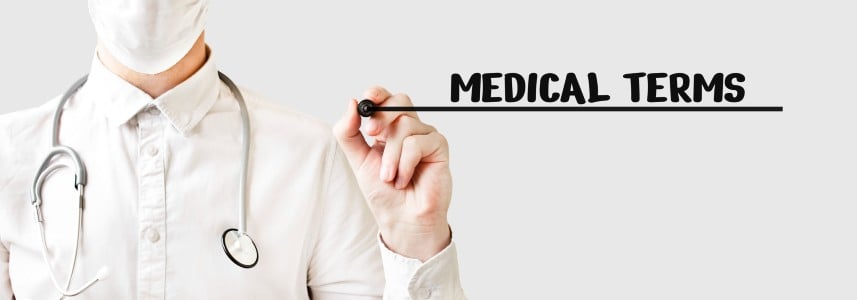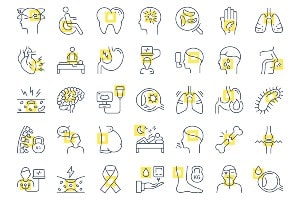About Fatigue

Learn about the disease, illness and/or condition Fatigue including: symptoms, causes, treatments, contraindications and conditions at ClusterMed.info.
Fatigue

| Fatigue |
|---|
Fatigue InformationFatigue definition and facts
Can fatigue be prevented?Fatigue as a symptom can occur as the result of many causes and therefore, prevention is not an issue. More importantly, the early recognition of fatigue will allow a person to seek medical care and potentially have an earlier diagnosis of the underlying cause made.Sometimes, symptoms like fatigue arise gradually and it is difficult for the person to realize that there is a problem. It may take an outside perspective from a friend or family member to appreciate a difference in function. Self-awareness of gradual decline in body performance is often difficult as a person makes repeated small accommodations to complete daily activities. Is there a test to diagnose fatigue?The key to finding the cause of fatigue in a patient is the care the health care professional takes in compiling a medical history. It is important to ask questions not only about the loss of energy but also about other potential problems that the patient may be experiencing such as shortness of breath, sleep patterns, hair loss, color of the stools, or any of the myriad of questions that might provide information as to what organ system may be involved.Usually, a history is taken by the health care professional asking questions about the quality and quantity of fatigue. Examples of some of the questions the health care professional may ask include:
What are the signs and symptoms of fatigue?Fatigue is a symptom of an underlying disease and is described in many ways from feeling weak to being constantly tired or lacking energy.There may be other associated symptoms depending upon the underlying cause.
What causes fatigue?
What is fatigue? What does it feel like?Fatigue can be described as the lack of energy and motivation (both physical and mental). This is different than drowsiness, a term that describes the need to sleep. Often a person complains of feeling tired and it is up to the health care professional to distinguish between fatigue and drowsiness, though both can occur at the same time. Aside from drowsiness, other symptoms can be confused with fatigue including shortness of breath with activity and muscle weakness. Again, all these symptoms can occur at the same time. Also, fatigue can be a normal response to physical and mental activity; in most normal individuals it is quickly relieved (usually in hours to about a day, depending on the intensity of the activity) by reducing the activity.Fatigue is a very common complaint and it is important to remember that it is a symptom and not a disease. Many illnesses can result in the complaint of fatigue and they can be physical, psychological, or a combination of the two.Often, the symptom of fatigue has a gradual onset and the person may not be aware of how much energy they have lost until they try to compare their ability to complete tasks from one time frame to another. They may presume that their fatigue is due to aging and ignore the symptom. This may lead to a delay in seeking care.While it is true that depression and other psychiatric issues may be the reason for fatigue, it is reasonable to make certain that there is not an underlying physical illness that is the root cause.Individuals with fatigue may have three primary complaints; however, it can vary in each person.
What is the treatment for fatigue?Since fatigue is a symptom of an underlying condition, the treatment depends upon the condition that is causing the fatigue, regardless of whether it is physical, psychological or a combination of the two.There may be a lag time between when the illness has been treated and the intensity of fatigue symptoms; some symptoms may resolve as soon as the underlying condition is treated. For example, individuals who are anemic feel much better as soon as their red blood cell count increases, while those recovering from infectious mononucleosis may require weeks to have their energy levels return to normal. |
More Diseases
A | B | C | D | E | F | G | H | I | J | K | L | M | N | O | P | Q | R | S | T | U | V | W | X | Y | Z
Diseases & Illnesses Definitions Of The Day
- Noncancerous Colloid Thyroid Nodule (Thyroid Nodules) ‐ How are thyroid nodules diagnosed?, Introduction to thyroid nodules …
- Skin, Laser Resurfacing (Laser Resurfacing) ‐ CO2 Laser Resurfacing, Complications of Laser Skin Resurfacing …
- Malignant Fibrous Histiocytoma (Bone Cancer Overview) ‐ Are there any treatments or medications that relieve bone cancer pain? …
- Double Vision ‐ Is it possible to prevent double vision?, What are the symptoms and signs of double vision? …
- Ageusia (Taste Disorders) ‐ Are taste disorders serious?, Can taste disorders be treated? …
- Autism Screening and Diagnosis ‐
- Alpha-fetoprotein Blood Test ‐ In which situations are high blood (serum) levels of AFP used as a tumor marker? …
- Polymyalgia Rheumatica ‐ How do health care professionals make a diagnosis of polymyalgia rheumatica? …
- Stump Appendicitis (Appendicitis) ‐ Appendicitis definition and facts, Are there long-term consequences of appendectomy? …
- Gonorrhea (Gonorrhea In Women) ‐ Gonorrhea facts, How is gonorrhea diagnosed?, What are sexually transmitted diseases (STDs)? …